プロジェクトProjects
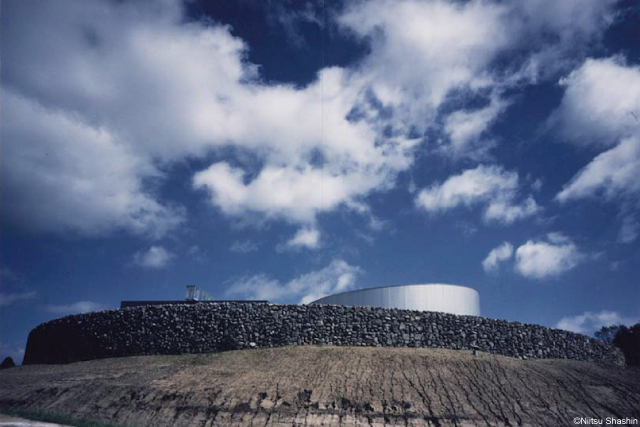
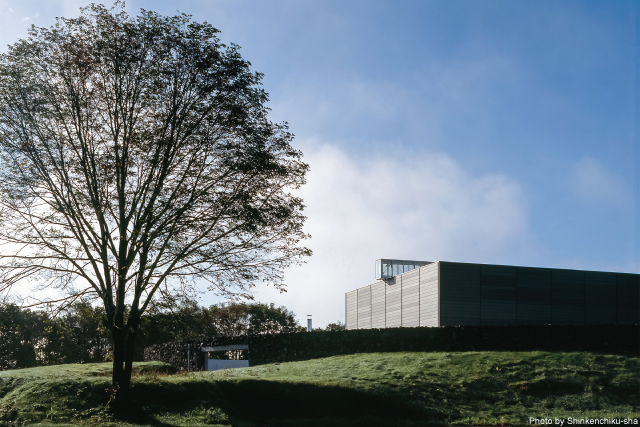
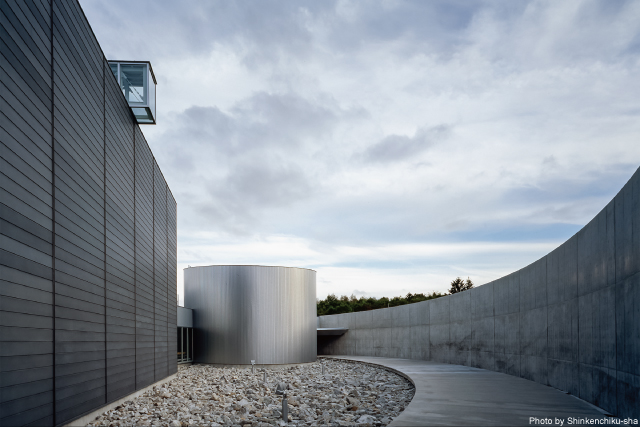
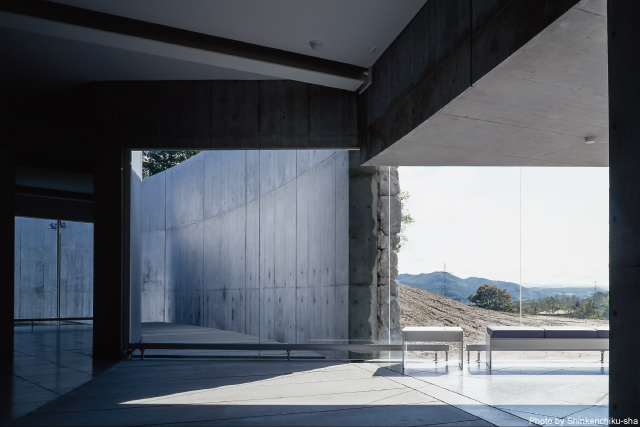
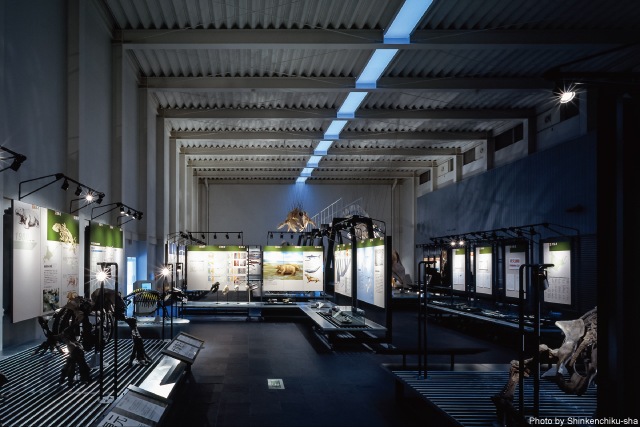
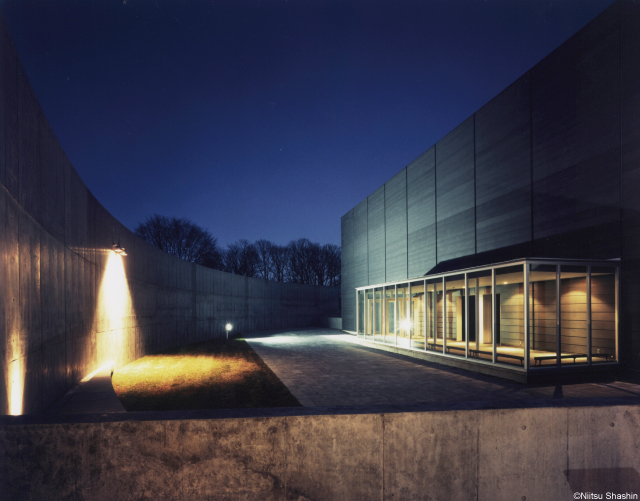
足寄動物化石博物館
2000
北海道足寄郡足寄町
構 造:鉄筋コンクリート造+鉄骨造
階 数:地上1階
延床面積:2,250㎡
EDS 構造計画( 構造設計 )
アトリエブンク + 総合設備計画( 設備設計 )
丹青社 + サードワーク( 展示計画 )
AIM( サイン )
動物化石に関する研究・公開の拠点として企画された町営の博物館である。新しい化石の発見や研究成果に対応して展示内容が更新されていくような、活動的な運営が想定されている。緩やかに傾斜しながら部分的に波をうつ地表面に直径72mの穴を穿ち、円環状の壁(円環壁)をまわして内部に人工的な領域を設定することを試みた。円環壁外側表面に用いた現地で産出される芽登石は、粗く野積みすることで周囲に広がる地形のスケールに対峙するテクスチャーとなり、境界としての存在感を獲得した。
一方円環壁内部は、外部の自然から隔絶された場所性が感じられない人工的な領域である。ここでは円環壁越しに見える空の様子から外部を感じる。床に敷き詰めた御影石を見下ろしながら、壁の内側に沿って内部に導かれる。建築の表層材として躯体を覆う亜鉛合金複合板、アルミメッキ鋼鈑、亜鉛アルミメッキ鋼鈑、アルミ板といった均質で無機的な素材は変化し続ける光をとらえ、反射光のみによる量塊の姿をつくり出す。内部では、発掘された化石のクリーニング処理やレプリカ作成を行う研究展示作業室、資料の解釈やデータ処理を行う研究室、復元された骨格や解説を公開する展示室などの諸室を、生産ラインをつくるように連結していった。発掘、搬入から展示、収蔵までの機能的な流れは、「化石工場」と呼ぶのがふさわしい。
北海道建築奨励賞
日本建築学会作品選集2000
新建築1998年12月号
B1 Magazine
Ashoro Museum of Paleontology
2000
Ashoro-cho, Hokkaido
Structure:RC+S
Floor:1 story
Floor Area:2,250㎡
EDS Structural Planning( Structural Design )
Atelier BNK+Sogo Consultants( Mechanical & Electrical Engineering )
Tanseisha+Third Work( Exhibitions Planning )
AIM( Sign Planning )
This is a municipal museum designed as a center for researching and exhibiting animal fossils. Operation of the museum was envisioned to be dynamic, with the content of the displays being updated as new fossils are discovered and new research results are revealed.
Our design established an internal artificial area by boring a 72-meter diameter hole in the gently sloping, partially rippled ground surface, and surrounding it by a ring-shaped (annular) wall. The rough stacking of locally-produced metouishi used for the outer surface of the annular wall creates a texture that confronts the scale of the surrounding terrain and gives the wall a strong presence as a boundary.
Meanwhile, inside the wall is an artificial area in which there is no sense of isolation from nature outside. Here, one is conscious of the outside from the appearance of the sky visible over the annular wall. Looking down at the granite covering the floor, visitors are guided inward along the inside of the wall. The surface materials covering the framework of the building are homogeneous, inorganic materials, such as panels of zinc alloy composite, aluminized steel, zinc-aluminized steel, and aluminum. These materials capture the ever-changing light to create the appearance of mass by reflected light only.
Inside the museum are workrooms where excavated fossils are cleaned and replicas made, laboratories where material is interpreted and data processed, and exhibition rooms where reconstructed skeletons and explanations are displayed. These rooms are linked together as though forming a production line, with a functional flow from excavation and transportation to display and storage that can appropriately be termed a “fossil factory”.
Hokkaido Architecture Encouragement Award
2000 Selected Architectural Designs of the Architectural Institute of Japan
Shinkenchiku Dec.1998
B1 Magazine

